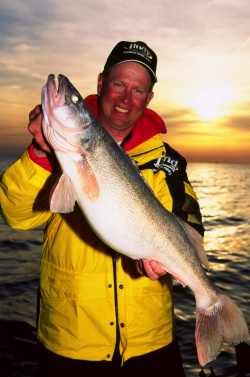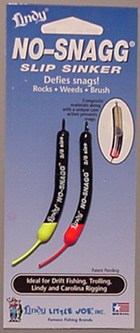 |
|||||
|
Promotional Team Favorites Lodging food and more
|
By Ted Takasaki and Scott Richardson Walleye pro Perry Good had just pulled up on a spot on the Mississippi River when he started to explain a mistake that anglers often make. "Most guys just don't fish shallow enough," said Good, who lives about an hour from the river bend downstream from Redwing.
Good's spot had it all. On a river bend, the people who owned the house there had strewn boulders and rock along the bank to control erosion. The bottom had a transition area from rock to sand -- exactly the kind of place walleyes like because this rock/sand transition concentrates fish. A small wingdam was just downstream. The water was dirty, and recent rains sent the level moving upward. But, nestled behind the outcropping, the spot -- and the walleyes stayed protected from faster water. The spot also had one other feature -- a small rock pile, no bigger than a boat length, that was situated in shallow water. During practice, Good had caught white bass there casting crankbaits to the shoreline after seeing schools of shiner minnows breaking the surface. "Whenever you find baitfish, you'll find walleyes," he said.Good used three-way rigs with NO-SNAGG sinkers as a dropper weight. The three-quarter ounce weights shaped like a pencil met less water resistance and the NO-SNAGG feature saved precious time by preventing break-offs. He used long 5-foot long snells to a hook bearing a leech. Rather than anchoring, he used his trolling motor to glide left to right and forward and back to move his bait to the sides, across the face, the top, and behind the rock pile. Use 10-pound main line on baitcasting reels and lighter line for the dropper and the leader. That way, you can pull free of snags without losing the entire rig. A flipping switch on the reel is handy to adjust depth quickly by merely pushing the bar.A small spot can hold lots of big fish. On Day 2 of the event, Good caught his 8-pounder and a 3-pounder, then went to other spots and returned later in the day. Dave Anderson, another PWT competitor was on the downstream from the rock pile. But, he voluntarily moved off knowing Good had fished the spot earlier and it was too small for two boats. Good immediately boated two 6-pounders, and three 5-pounders in the last 45 minutes he had left before racing to the weigh-in. Those fish proved to be the difference he needed to win.Good also used two other successful tactics while fishing for the tournament. In one, he used the same three-way set-up to rig over the tips of long points in Lake Pepin that featuring clam beds in water less than 6 feet deep. In another, he shortened leaders to 2 feet and anchored upstream from wingdams. The current rolling on the face of the windams creates an eddy at the base of the rock bars. Wingdams are often a magnet for walleyes. The U.S. Army Corps of Engineers places these rocky wingdams perpendicular to the shore to divert current towards the channel for the barges. Watch for them and stay in the marked channel while motoring from spot to spot. His live bait of choice on the wingdams was a willow cat, which is a local favorite. They're minnows that look like the young bullheads that walleyes love to munch. Beware of the trio of spines on the top fin and one on each side. They can hurt if they sting you. But, they're worth the trouble. Ted and a good friend of his, Terry Wiemann, used willowcats to catch 15 walleyes up to 7 pounds in a backwater eddy next to current while filming an upcoming segment for Midwest Outdoors television. A Lindy Fish Handling Glove can be a good idea while handling these spiny critters. Fish can also be caught with crankbaits while casting along shorelines or trolled with leadcore in Lake Pepin. Again, many of the big fish came from less than 6 feet of water. Anglers also caught good fish while trolling crankbaits on monofilament, finding that walleyes were suspended 3 to 6 feet deep over 12 feet to 20 feet of water. "When you have gizzard shad and white bass or other suspending minnows as forage, walleyes will suspend just below them.", Perry added.When it comes to big fish, try fishing shallow. In this case, it does hurt to be a Shallow Hal. |
||||
|---|---|---|---|---|---|

